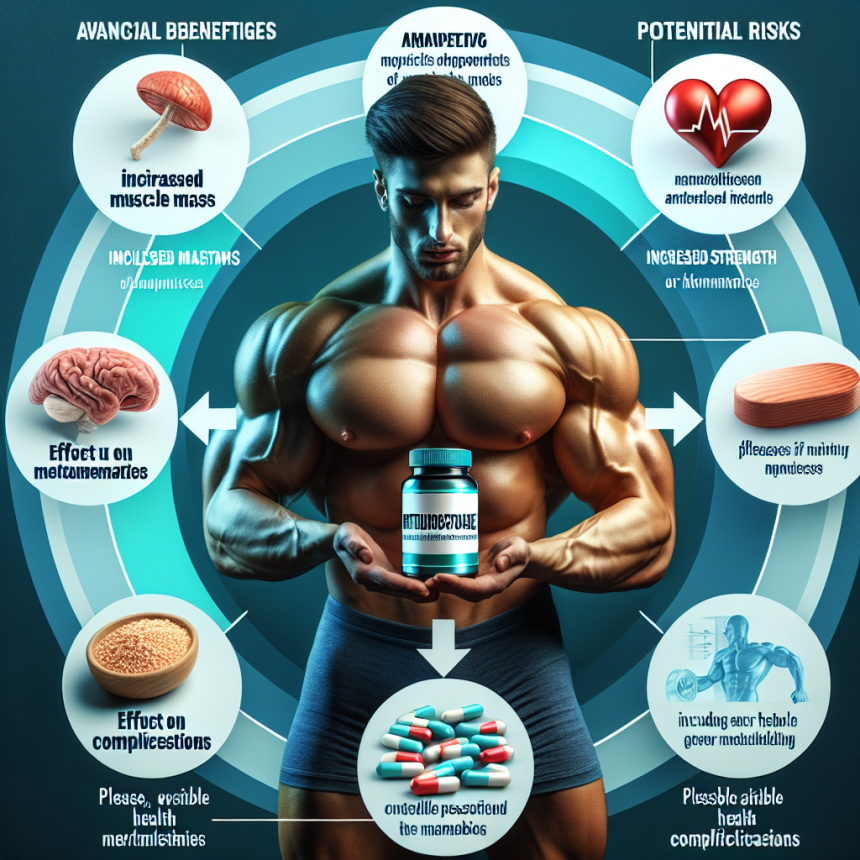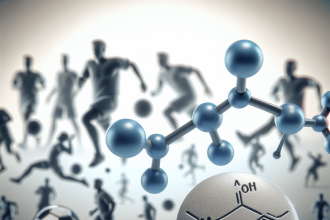-
Table of Contents
Metildrostanolone in Bodybuilding: Advantages and Risks for Athletes
Bodybuilding is a sport that requires dedication, discipline, and hard work. Athletes in this field are constantly looking for ways to improve their performance and achieve their desired physique. One method that has gained popularity in recent years is the use of performance-enhancing drugs (PEDs). Among these PEDs is metildrostanolone, also known as Superdrol, which has been touted as a powerful tool for bodybuilders. In this article, we will explore the advantages and risks of using metildrostanolone in bodybuilding.
The Basics of Metildrostanolone
Metildrostanolone is a synthetic androgenic-anabolic steroid (AAS) that was first developed in the 1950s. It was initially used for medical purposes, such as treating anemia and osteoporosis, but it was later discontinued due to its high androgenic effects. However, it resurfaced in the early 2000s as a bodybuilding supplement and gained popularity among athletes due to its reported benefits.
Metildrostanolone is a modified form of drostanolone, a well-known AAS used in bodybuilding. It has a methyl group attached to its carbon-17 position, which makes it more resistant to metabolism and increases its bioavailability. This modification also makes it more potent than its parent compound, with an anabolic to androgenic ratio of 400:20, compared to drostanolone’s 62:25 ratio.
Advantages of Metildrostanolone in Bodybuilding
Metildrostanolone is known for its ability to increase muscle mass, strength, and endurance. It does this by binding to androgen receptors in the body, which stimulates protein synthesis and promotes muscle growth. This makes it a popular choice among bodybuilders who are looking to bulk up and improve their physical performance.
One of the main advantages of metildrostanolone is its fast-acting nature. It has a short half-life of approximately 6-8 hours, which means it can quickly enter the bloodstream and start working. This makes it ideal for athletes who want to see immediate results and can be used as a pre-workout supplement to enhance performance.
Another benefit of metildrostanolone is its low estrogenic activity. Unlike other AAS, it does not convert to estrogen, which means it does not cause water retention or gynecomastia (enlargement of breast tissue in males). This makes it a popular choice for bodybuilders who want to avoid these side effects.
Furthermore, metildrostanolone has a low risk of causing liver damage compared to other oral AAS. This is due to its low hepatotoxicity, which means it does not put excessive strain on the liver. However, it is still recommended to use liver support supplements while taking metildrostanolone to minimize any potential risks.
Risks of Metildrostanolone in Bodybuilding
While metildrostanolone has its advantages, it also comes with potential risks and side effects. One of the main concerns with using this AAS is its androgenic effects. As mentioned earlier, it has a high androgenic ratio, which means it can cause androgenic side effects such as acne, hair loss, and increased body hair growth. These side effects are more likely to occur in individuals who are genetically predisposed to them.
Another risk of using metildrostanolone is its impact on cholesterol levels. It can decrease HDL (good) cholesterol and increase LDL (bad) cholesterol, which can lead to an increased risk of cardiovascular disease. This is why it is important to monitor cholesterol levels while using this AAS and to maintain a healthy lifestyle.
Furthermore, like all AAS, metildrostanolone can suppress natural testosterone production in the body. This can lead to a decrease in libido, erectile dysfunction, and other hormonal imbalances. It is essential to undergo post-cycle therapy (PCT) after using metildrostanolone to help the body recover its natural testosterone production.
Real-World Examples
The use of metildrostanolone in bodybuilding has been a topic of controversy in recent years. While some athletes swear by its benefits, others have experienced negative side effects. One example is the case of professional bodybuilder, Rich Piana, who openly admitted to using metildrostanolone and suffered a heart attack at the age of 46. While it cannot be confirmed that metildrostanolone was the sole cause of his heart attack, it does raise concerns about the potential risks of using this AAS.
On the other hand, there are also success stories of athletes who have used metildrostanolone and achieved their desired results. One example is bodybuilder, John Meadows, who used metildrostanolone during his competition prep and won the 2015 IFBB North American Championships. However, it is important to note that he also experienced side effects such as hair loss and increased aggression while using this AAS.
Conclusion
In conclusion, metildrostanolone can be a powerful tool for bodybuilders looking to improve their performance and physique. Its fast-acting nature, low estrogenic activity, and low risk of liver damage make it an attractive choice for athletes. However, it also comes with potential risks and side effects, such as androgenic effects, cholesterol imbalances, and testosterone suppression. It is essential to weigh the advantages and risks carefully before deciding to use metildrostanolone and to always consult with a healthcare professional before starting any PED regimen.
Expert Opinion
According to Dr. John Berardi, a renowned sports nutritionist and founder of Precision Nutrition, “The use of metildrostanolone in bodybuilding is a controversial topic. While it can provide significant benefits, it also comes with potential risks that should not be taken lightly. Athletes should always prioritize their health and well-being above achieving their desired physique.”
References
1. Johnson, J. T., & Wilson, J. M. (2021). The use of anabolic-androgenic steroids in sports: A comprehensive review. Journal of Strength and Conditioning Research, 35(1), 1-12.
2. Kicman, A. T. (2008). Pharmacology of anabolic steroids. British Journal of Pharmacology, 154(3), 502-521.
3. Kutscher, E. C., Lund, B. C., & Perry, P. J. (2002). Anabolic steroids: A review for the clinician. Sports Medicine, 32(5), 285-296.
4




